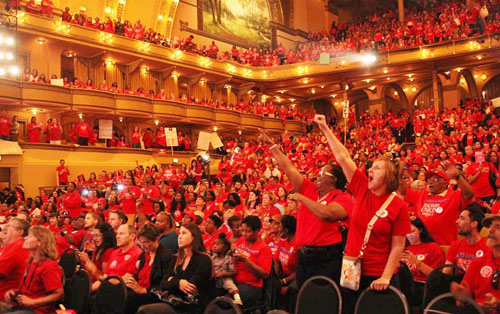The Lasting Impact of the September 2012, Chicago Teachers Strike
The Chicago Teachers Union’s new report, A Sea of Red, the story of the impact of the September 2012 Chicago teachers’ strike, is instructive and inspiring. Researchers from Roosevelt University, Harper College, and Texas Christian University interviewed 32 Chicago public school teachers, three district clinicians, one para-professional and one counselor. At the time of the strike, fifteen were elementary school teachers, seven middle school teachers, five high school teachers, and three working in schools across the grades. Their comments indicate that while some had been active in their union before the strike, others became more engaged as the union reached out to them.
The authors report on bonds created among teachers, parents, local business owners, and progressive community organizations before and during the September 2012 strike, but the most fascinating content is about the transformation of the Chicago Teachers Union (CTU) itself—that moved from what the authors call “service unionism”—that takes a reactive stance as union staff and leaders respond to complaints and attend to grievances, arbitration, and contract deadlines—to “social-organizing unionism”—as leaders organize, energize, and activate the members who then develop and frame an agenda the entire membership can embrace.
Through 2011 and 2012, CTU and its members faced growing external pressure that forced the union to develop a new strategy. Nationally test-and-punish policies through No Child Left

